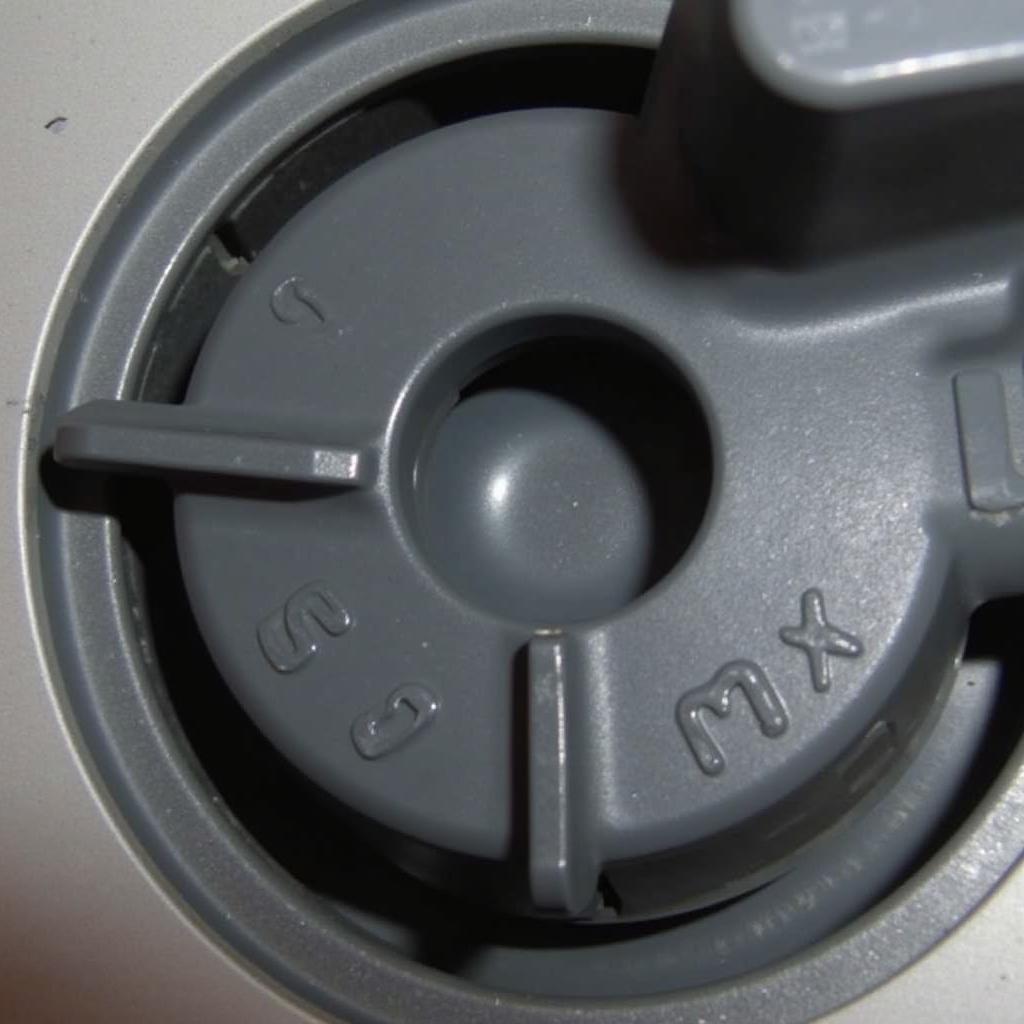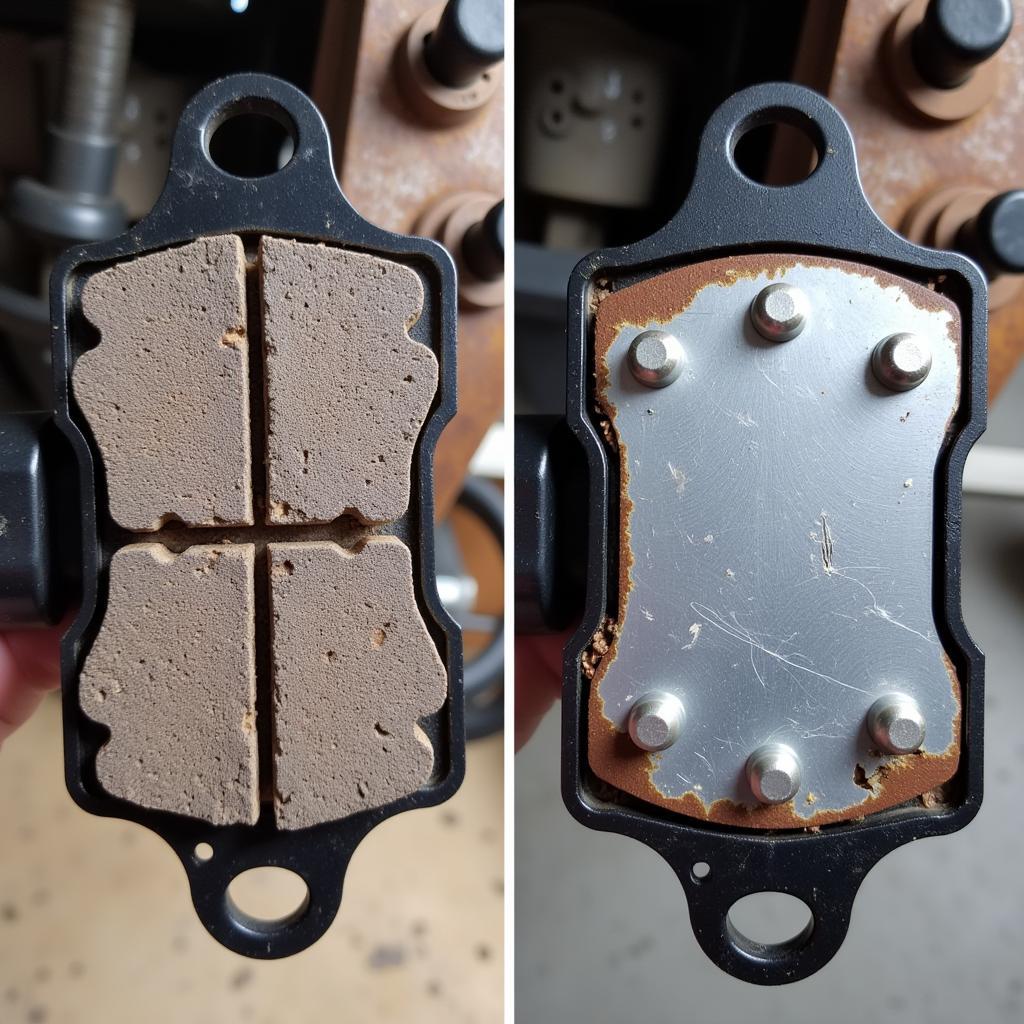A glowing brake warning light on your dashboard can be a real pain, especially in a 2004 Jeep Grand Cherokee. Ignoring it isn’t an option, as it usually signals a problem with your braking system that needs immediate attention. Don’t worry, we’re here to guide you through the common causes and how to address them.
Common Culprits Behind a Stubborn Brake Light
Several issues can trigger the brake warning light in your 2004 Grand Cherokee. Let’s dive into the most frequent ones:
1. Low Brake Fluid: The Heart of the Matter
Brake fluid is vital as it transmits the force from your foot on the pedal to the brakes themselves. If the fluid level drops too low, it can trigger the warning light.
What to do:
- Check the brake fluid reservoir. It’s usually located near the firewall on the driver’s side and has a translucent plastic reservoir.
- Inspect the fluid level. Ideally, it should be between the minimum and maximum lines.
- Add the correct brake fluid (check your owner’s manual) if the level is low.
- If the level is significantly low or drops quickly after refilling, there may be a leak. This requires professional attention.
 2004 Grand Cherokee Low Brake Fluid
2004 Grand Cherokee Low Brake Fluid
2. Worn Brake Pads: Time for a Replacement
Brake pads wear down with use, and when they reach a certain point, they can trigger the warning light.
What to do:
- Listen for a high-pitched squealing or grinding noise when you apply the brakes. This is a telltale sign of worn brake pads.
- Inspect the brake pads visually. You might need to remove a wheel to get a good look. If they are thin or have reached the wear indicator, it’s replacement time.
- Replacing brake pads is best left to a professional, especially if you’re not comfortable working on your vehicle.
 Worn Brake Pads on a 2004 Jeep Grand Cherokee
Worn Brake Pads on a 2004 Jeep Grand Cherokee
3. Faulty Brake Light Switch: More Than Meets the Eye
The brake light switch, located under the dashboard near the brake pedal, is responsible for activating your brake lights when you press the pedal. A faulty switch can prevent the lights from working correctly and trigger the warning light.
What to do:
- Check if your brake lights are working. Ask someone to step on the brake pedal while you observe the lights.
- If the brake lights don’t work, the switch is likely the problem.
- Replacing a brake light switch usually involves accessing the area under the dashboard, which might require some mechanical skills.
4. ABS Issues: A More Complex Situation
The Anti-lock Braking System (ABS) is crucial for safe braking, especially in slippery conditions. If there’s an issue with the ABS module, wheel speed sensors, or other components, it can trigger the warning light.
What to do:
- Notice if the ABS warning light illuminates along with the brake warning light. This is a strong indicator of an ABS problem.
- Diagnosing ABS issues often requires specialized equipment and expertise. It’s best to take your Grand Cherokee to a qualified mechanic or dealership.
Don’t Ignore the Warning
A persistent brake warning light is a clear sign that something is amiss with your 2004 Jeep Grand Cherokee’s braking system. Ignoring it could compromise your safety and potentially lead to more costly repairs down the road.
Remember:
- Regularly check your brake fluid level and top it up with the correct type of fluid as needed.
- Be attentive to any unusual noises or changes in your brake pedal feel.
- If you’re uncomfortable diagnosing or fixing the issue yourself, don’t hesitate to seek professional help.
While some fixes, like adding brake fluid, might be straightforward, others require more in-depth knowledge and tools. Addressing the root cause promptly ensures your 2004 Grand Cherokee’s braking system remains in top shape, keeping you safe on the road.
